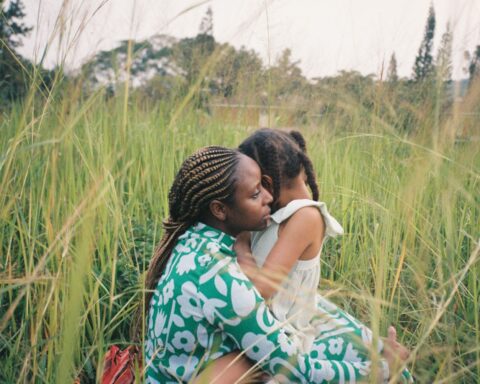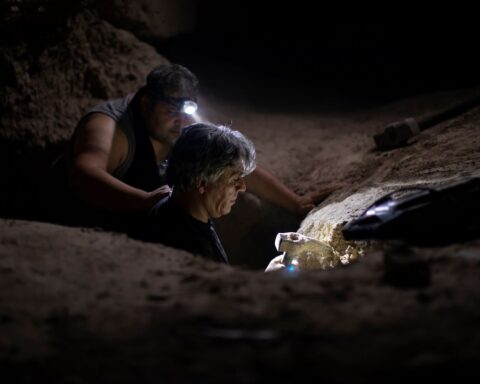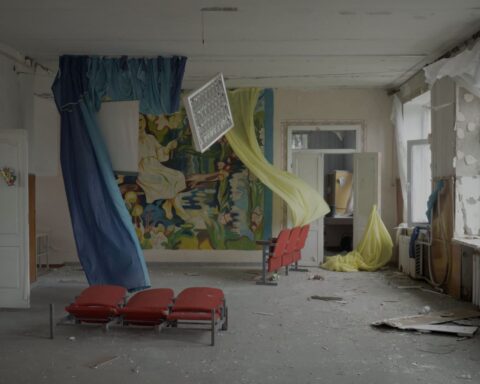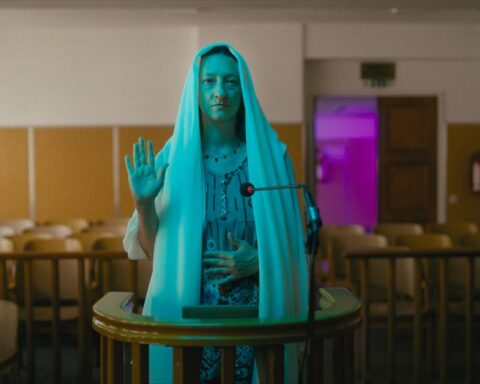I, Tonya
(USA, 121 min.)
Dir. Craig Gillespie, Writ. Steven Rogers
Programme: Special Presentations (World Premiere)
“Everybody has their own truth, and life’s what you fucking make of it,” says Tonya Harding (Margot Robbie) towards the end of I, Tonya. Harding likes to make her own version of the truth and there’s a lot to enjoy in the warped retelling of her life as the notorious ex-figure skater who holds dual honors as the first American woman to land a successful triple axel and the only athlete to be banned from the sport after (allegedly) conspiring to oust her rival with a Billy bat. This twisted black comedy furthers Harding’s perspective by employing an ingenious mockumentary style. The embellishments of the ex-skater’s story offer uncanny insights into her troubled mind.
I, Tonya is a wickedly funny spin on the popularity of true crime documentaries such as OJ: Made in America and Amanda Knox that capitalize on the notoriety of their subjects and audiences’ appetites for juicy details of grisly deeds. The film is sympathetic to Harding’s downfall without letting her off the hook, and one can’t help but feel for her by the end of the film even if her collapse is a product of her own making.
The whip smart screenplay by Steven Rogers draws upon copious amounts of archival footage and interviews that Tonya Harding and her ex-husband/partner in crime Jeff Gillooly (Sebastian Stan) gae to the writer. The film runs with their wildly contradictory versions of events. Other interviewees include Harding’s mother LaVona Golding (a scene-stealing Allison Janney), her skating coach Diane Rawlinson (Julianne Nicholson), a sleazebag tabloid reporter (Bobby Cannavale), and Gillooly’s doofus co-conspirator, Shawn Eckhardt (Paul Walter Hauser). The actors recreate these interviews with zany creative licence, and the talking heads format frames the narrative to contextualize Harding’s journey towards (allegedly) wrangling some goons to take out the kneecap of rival skater Nancy Kerrigan. (An event humorously referred to as “The Incident” by all parties.) I, Tonya offers a farcical impression of Harding’s unsportsmanlike conduct to illustrate the elusive nature of truth in an age of hyper-media, ephemeral celebrity, and fake news, which has been around long before it came a Presidential hashtag.
Early scenes show Harding’s boorish and hard-drinking mother enroll her in skating when she’s barely four years old. While the young Harding smokes the competition and impresses the skeptical Rawlinson, her mother berates her from the sidelines like an irate hockey hoser. LaVona abuses her daughter both physically and psychologically in an effort to push her towards her best, but these early teachings ultimately shape the fragile and complex psychology that leads to Harding’s crippling insecurity and delusions of grandeur.
Harding rises quickly and masters her technique and I, Tonya stages some glittering skating sequences in which the fluid camerawork by Nicolas Karakatsanis glides like Harding’s partner on the ice. Robbie owns the rink as Tonya’s confidence soars with each new move she masters. What she gains in technical merit she fails to receive in artistic credibility from the judges, who just don’t seem to give her a break. Characterized as white trash by the media and fans for failing to conform to tradition with her cheap skating costumes, cheerleader-like routines, and rock music accompaniment in lieu of classical overtures, Harding is a foil for the figure skating establishment.
I, Tonya moulds its heroine into a victim of circumstance as she tells her story. As Tonya grows, the film offers a description of Kerrigan’s rise as the anointed star of figure skating with a few grumbling observations from the interviewees. I, Tonya offers a similar observation as this year’s festival opener Borg/McEnroe on the media’s fondness for shaping athletes into competitors through their contrasting personalities. These depictions reinforce the status quo by favouring athletes who offer squeaky clean wholesome images above rebellious players who aren’t afraid to curse and spit in pursuit of the podium’s top spot. Unlike the John McEnroe we see played by Shia LaBeouf, however, Robbie’s Harding doesn’t take accountability for her behaviour.
A running line through the film is “It wasn’t my fault” as Harding shirks responsibility at every turn. Interview upon interview reveals an invincibility complex in Harding’s character, which comes from surviving punch upon punch from her abusive relationship with her mother and her toxic marriage to Gillooly, both of whom beat her into believing that she deserves every lick she gets. Gillespie and the actors handle the scenes of unflinching domestic violence with remarkable care. The unvarnished depiction of spousal abuse and child abuse is akin to a punch in the face as I, Tonya has us laughing at the quirks of the Harding tragedy one moment before it slaps us with jarring violence that stings. The film doesn’t hold anything back in Harding’s tumultuous relationships with Gillooly and her mother, and it shows us how violence becomes normalized when it is so commonplace. A scene in which LaVona hurls a steak knife straight into her daughter’s arm is as horrifying as it is hilarious.
The performances from the committed ensemble embrace the unvarnished folly of this tragicomic tale. Robbie’s unforgettable award-calibre performance is deeply empathetic, particularly towards the end of the film as Harding realizes the consequences she faces. She shines in a gut-wrenching courtroom scene in which Harding pleads to a judge that stripping her of her right to skate is akin to giving her a life sentence. The interview sequences, however, challenge any clear-cut chance to exonerate Harding as she smugly reframes the scenario to highlight the mitigating circumstances in her favour.
The aggravating circumstances of Harding’s story are best encapsulated in Allison Janney’s off-the-wall performance as Harding’s foulmouthed chain-smoking mother, who gives her interviews with a pet parrot pecking at her ear. In what is easily the best performance of the festival, Janney excels in this kind of role with her dry comedic timing and unsentimental air as LaVona berates her daughter endlessly and gives us a sense of the woman who was far more complex than the headlines made her out to be. One might find the personalities of I, Tonya too larger than life to believe, but when Gillespie offers some archival snippets of their real life counterparts, one appreciates how flawlessly the actors become dead ringers for their characters in this tabloid mockumentary fable. Watch your kneecaps, Christopher Guest.










